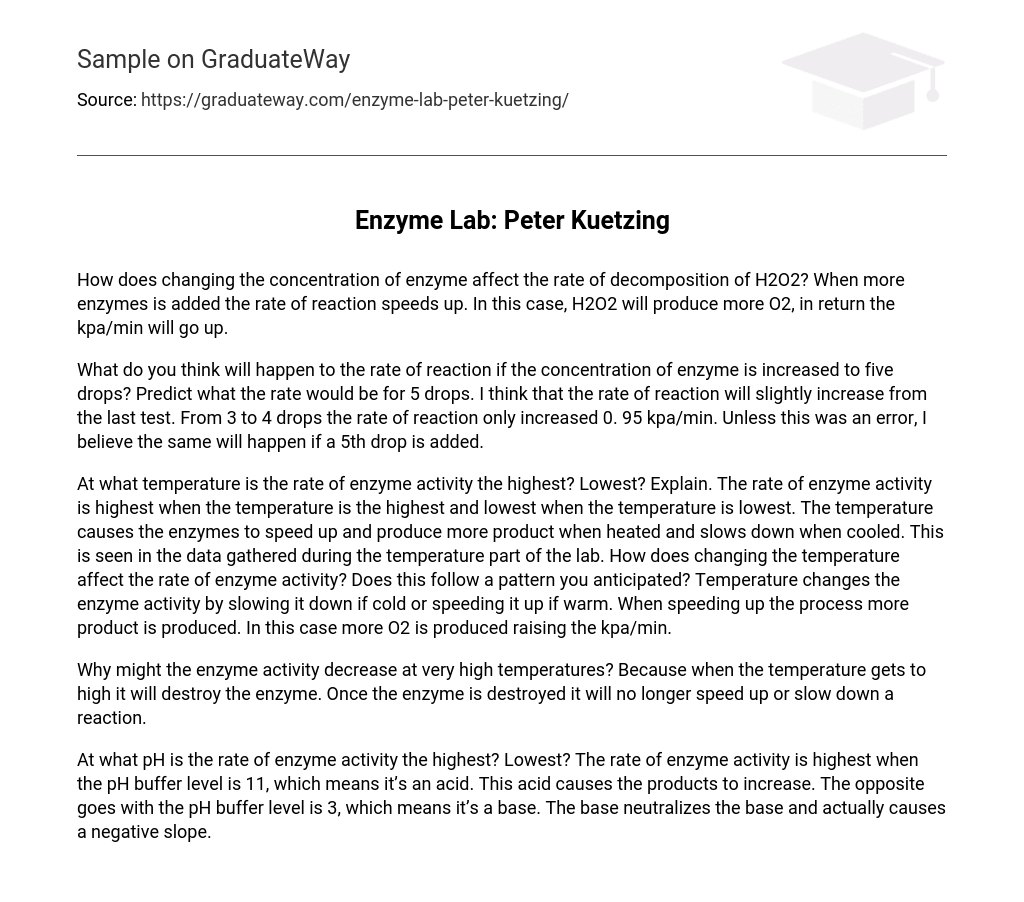How does changing the concentration of enzyme affect the rate of decomposition of H2O2? When more enzymes is added the rate of reaction speeds up. In this case, H2O2 will produce more O2, in return the kpa/min will go up.
What do you think will happen to the rate of reaction if the concentration of enzyme is increased to five drops? Predict what the rate would be for 5 drops. I think that the rate of reaction will slightly increase from the last test. From 3 to 4 drops the rate of reaction only increased 0. 95 kpa/min. Unless this was an error, I believe the same will happen if a 5th drop is added.
At what temperature is the rate of enzyme activity the highest? Lowest? Explain. The rate of enzyme activity is highest when the temperature is the highest and lowest when the temperature is lowest. The temperature causes the enzymes to speed up and produce more product when heated and slows down when cooled. This is seen in the data gathered during the temperature part of the lab. How does changing the temperature affect the rate of enzyme activity? Does this follow a pattern you anticipated? Temperature changes the enzyme activity by slowing it down if cold or speeding it up if warm. When speeding up the process more product is produced. In this case more O2 is produced raising the kpa/min.
Why might the enzyme activity decrease at very high temperatures? Because when the temperature gets to high it will destroy the enzyme. Once the enzyme is destroyed it will no longer speed up or slow down a reaction.
At what pH is the rate of enzyme activity the highest? Lowest? The rate of enzyme activity is highest when the pH buffer level is 11, which means it’s an acid. This acid causes the products to increase. The opposite goes with the pH buffer level is 3, which means it’s a base. The base neutralizes the base and actually causes a negative slope.





